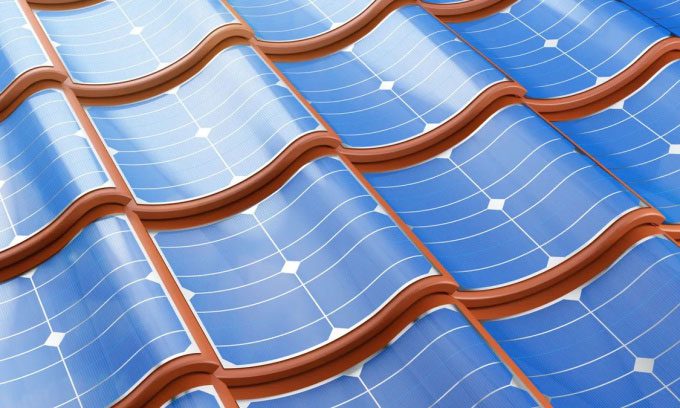Scientists Develop 50 Micrometer Thick Silicon-based Solar Cells with High Energy Conversion Efficiency.
A research team led by experts from Jiangsu University of Science and Technology (JUST) has developed silicon-based solar cells thinner than an A4 sheet of paper, as reported by Interesting Engineering on February 13. Researchers from Curtin University in Australia and the Chinese company LONGi Green Energy Technology also contributed to the new study.

Simulation of Flexible Solar Cells. (Photo: laremenko/iStock).
Silicon-based solar cells are becoming increasingly popular. However, this technology is often limited to applications in places like ground-based solar farms with flat, rigid panels. Other environments, such as outer space, require curved surfaces and tend to use more expensive technologies as substitutes.
Solar cells made from crystalline silicon have a “sandwich” structure, where the semiconductor disc or the middle layer contributes most of the thickness of the panel. In the new study, the team created silicon panels that are merely 50 micrometers thick, thinner than an A4 sheet. Although they cannot be folded like paper, these silicon solar cells can be rolled up, making them very useful for installation on satellites or for other space applications.
Thinning silicon solar cells also has another benefit: it reduces material consumption, which in turn decreases weight and deployment costs.
However, thinner solar cells come with a disadvantage of reduced energy conversion efficiency (PCE). This is also the primary reason why thin silicon cells have not yet become mainstream. In previous efforts, scientists had created flexible silicon cells under 150 micrometers thick with a maximum PCE of 24.7%.
The PCE of thinner panels needs to be maintained around this level for the cells to operate effectively. In the new study, the team successfully raised the PCE above 26% for all the panels they created, which ranged in thickness from 50 to 130 micrometers.
Since silicon solar cells can be bent in various ways, the research team believes they can be used in many devices such as drones, balloons, and even smart wearable technology. Currently, they are focused on developing flexible solar panels that are highly portable and can be rolled up like film.


















































